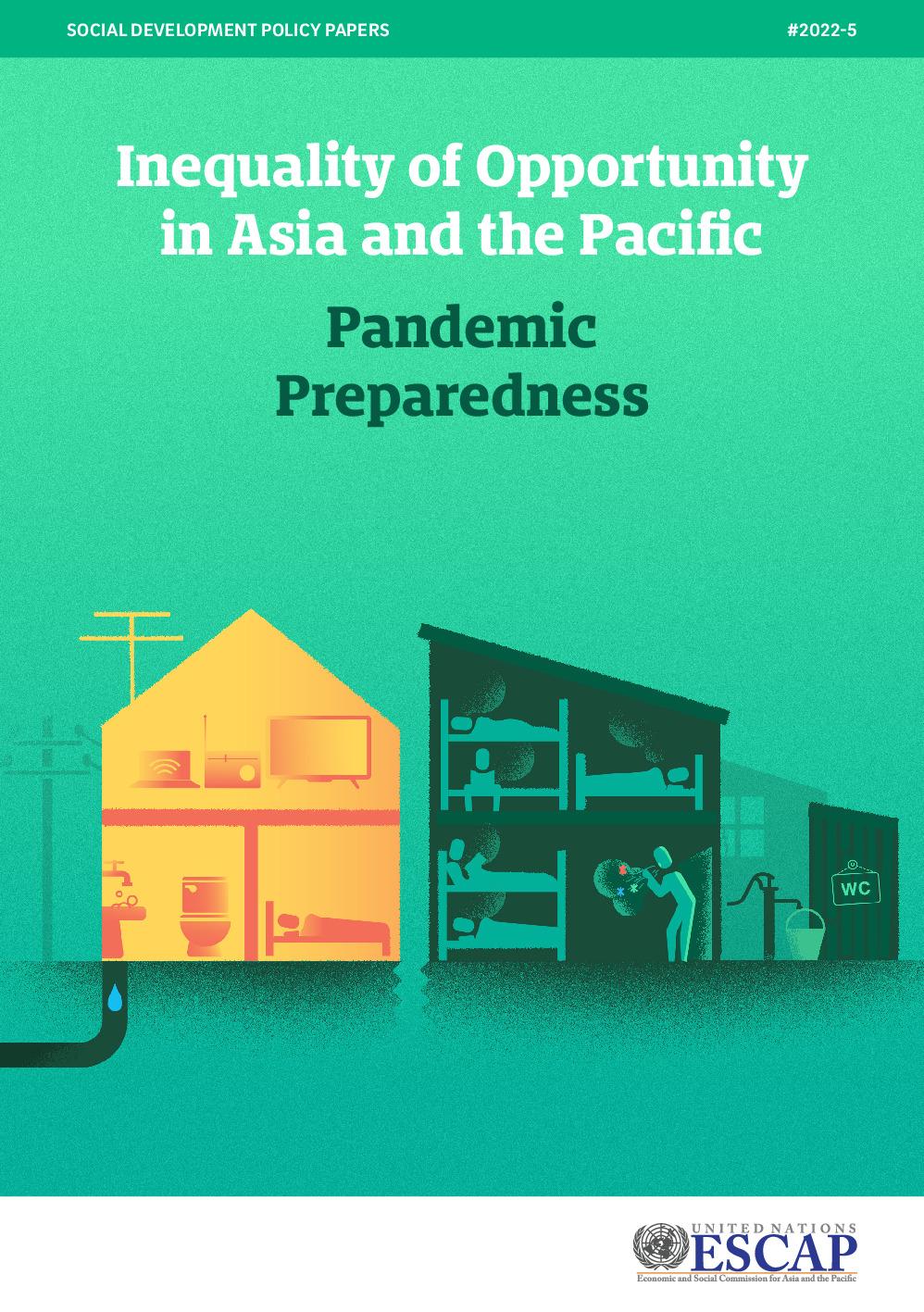Inequality of opportunity in Asia and the Pacific : pandemic preparedness
Pandemics have constituted challenging and recurrent episodes of humankind history. Major pandemics such as plagues, cholera, smallpox, tuberculosis and influenza have afflicted the health and well-being of millions, bringing societies and economies to their knees. The world is still grappling with the COVID-19 pandemic caused by the SARS-CoV-2 virus. As of April 25, 2022, the World Health Organization (WHO) had confirmed over 500 million positive cases and over 6 million deaths worldwide. While most infected by COVID-19 do recover, many will suffer long-term consequences, such as fatigue, fever, tiredness and depression. The COVID-19 pandemic has been a major shock to economic and social progress in Asia and the Pacific. By exacerbating existing inequalities of income and access to basic services and opportunities, the pandemic could reverse decades of hard-won gains by pushing millions back into poverty. Its far-reaching health and economic consequences are still unfolding. Poorer individuals, migrants, informal workers, less educated groups, women, children and the youth, are more likely to contract the virus because of living and working conditions that limit their ability to protect themselves from the disease. At the same time, the health consequences of the disease are felt by all, particularly older persons and those suffering from chronic or long-term health conditions. The economic costs of the COVID-19 pandemic have been high. During 2020, the Asia-Pacific region experienced a GDP contraction of 1.1 per cent. Disruptions in economic activity are estimated to have pushed 75-80 million people back into extreme poverty. The years 2021–2022, however, proved to be even more challenging as the highly contagious Delta and Omicron variants resulted in further lockdowns and continued travel bans. The situation was aggravated by the slow progress of vaccination rollouts. As COVID-19 is turning endemic, it is time to reflect on how to better prepare for future similar threats. In addition to national public health responses and global detection and coordination efforts, much of the preparation can be done at the household level. Understanding and addressing inequalities in access to basic services.


